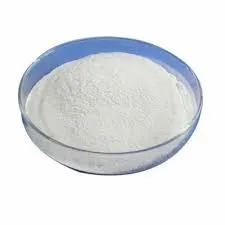
Nov . 05, 2024 18:29 Back to list
hydroxyethyl cellulose manufacturing process
Hydroxyethyl Cellulose Manufacturing Process
Hydroxyethyl cellulose (HEC) is a versatile water-soluble polymer derived from cellulose. It is widely used in various industries, including pharmaceuticals, cosmetics, food, and construction, due to its thickening, stabilizing, and film-forming properties. The manufacturing process of HEC involves several crucial steps that ensure the production of high-quality material.
Raw Material Selection
The process begins with the selection of high-purity cellulose as the primary raw material. Cellulose can be extracted from various sources, including wood pulp and cotton. The chosen cellulose must undergo purification to remove impurities that could affect the properties of the final product.
Etherification Reaction
The next crucial step is the etherification of cellulose. This is where hydroxyethyl groups are introduced to the cellulose structure. The cellulose is first dissolved in an alkaline solution, typically sodium hydroxide, to create a cellulose alkali complex. This transformation activates the cellulose chain, making it more reactive to etherification.
The alkaline cellulose is then treated with ethylene oxide, a reactant that introduces hydroxyethyl groups. The controlled reaction conditions, such as temperature and pressure, are essential during this stage to ensure the appropriate substitution degree and to minimize side reactions. Fine-tuning these parameters allows manufacturers to tailor the viscosity and solubility of HEC for specific applications.
Neutralization and Purification
hydroxyethyl cellulose manufacturing process

Once the etherification reaction is complete, the next step involves neutralizing any remaining alkali. This is typically achieved by washing the product with water and adjusting the pH to neutral. Purification is crucial to remove unreacted materials and by-products, ensuring that only high-purity HEC is obtained.
Drying and Milling
Following purification, the resulting HEC is in a wet form that must be dried. Techniques such as spray drying or tray drying are employed to reduce moisture content effectively. After drying, the HEC is milled into a fine powder to facilitate easy handling and incorporation into various formulations.
Quality Control
Quality control measures are implemented throughout the manufacturing process to ensure the consistency and purity of the final product. This includes testing for viscosity, solubility, and other physicochemical properties to ensure the HEC meets industry standards.
Conclusion
The manufacturing process of hydroxyethyl cellulose is a complex but well-established procedure that combines raw material selection, chemical modification, purification, and rigorous quality control. The resulting HEC plays a critical role in numerous applications, underscoring its importance in modern technology and industry. As the demand for eco-friendly and efficient additives continues to grow, HEC remains a vital component in enhancing the performance of various products.
-
Versatile Hpmc Uses in Different Industries
NewsJun.19,2025
-
Redispersible Powder's Role in Enhancing Durability of Construction Products
NewsJun.19,2025
-
Hydroxyethyl Cellulose Applications Driving Green Industrial Processes
NewsJun.19,2025
-
Exploring Different Redispersible Polymer Powder
NewsJun.19,2025
-
Choosing the Right Mortar Bonding Agent
NewsJun.19,2025
-
Applications and Significance of China Hpmc in Modern Industries
NewsJun.19,2025







